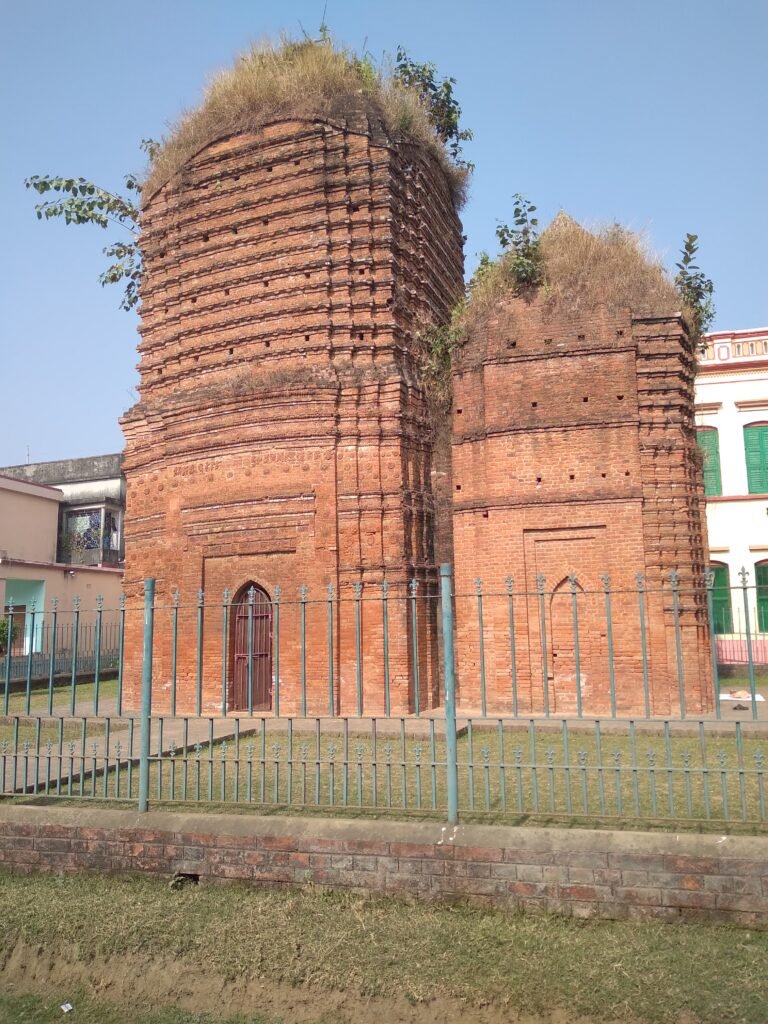
2022: Baidyapur
Journey begins
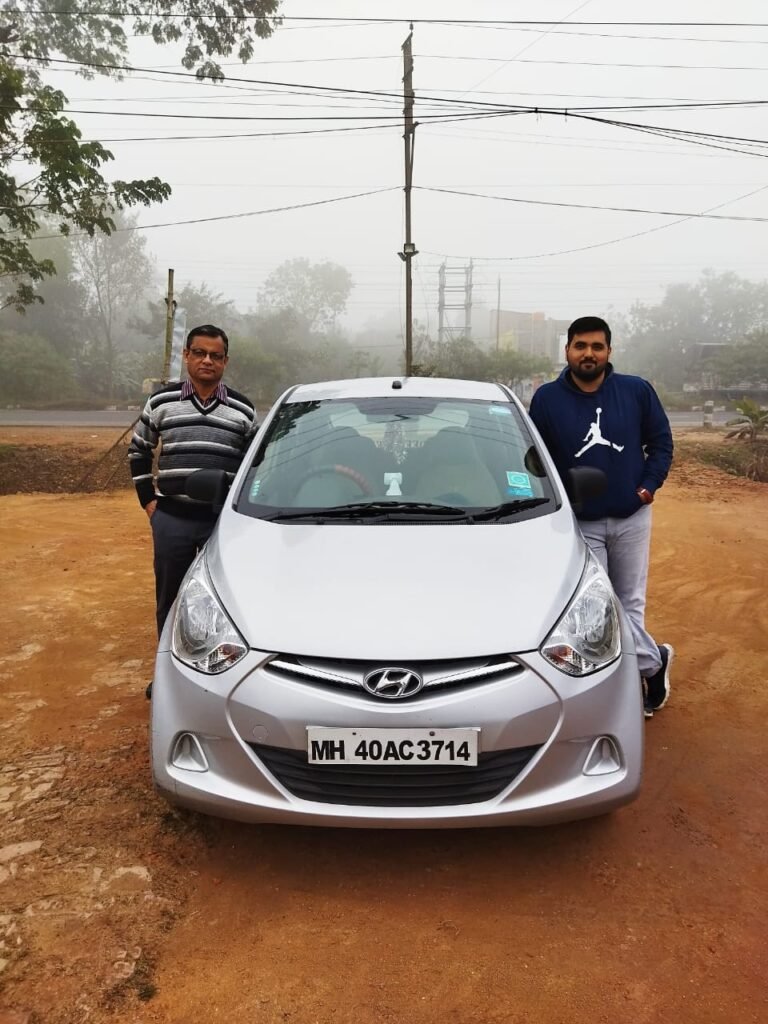
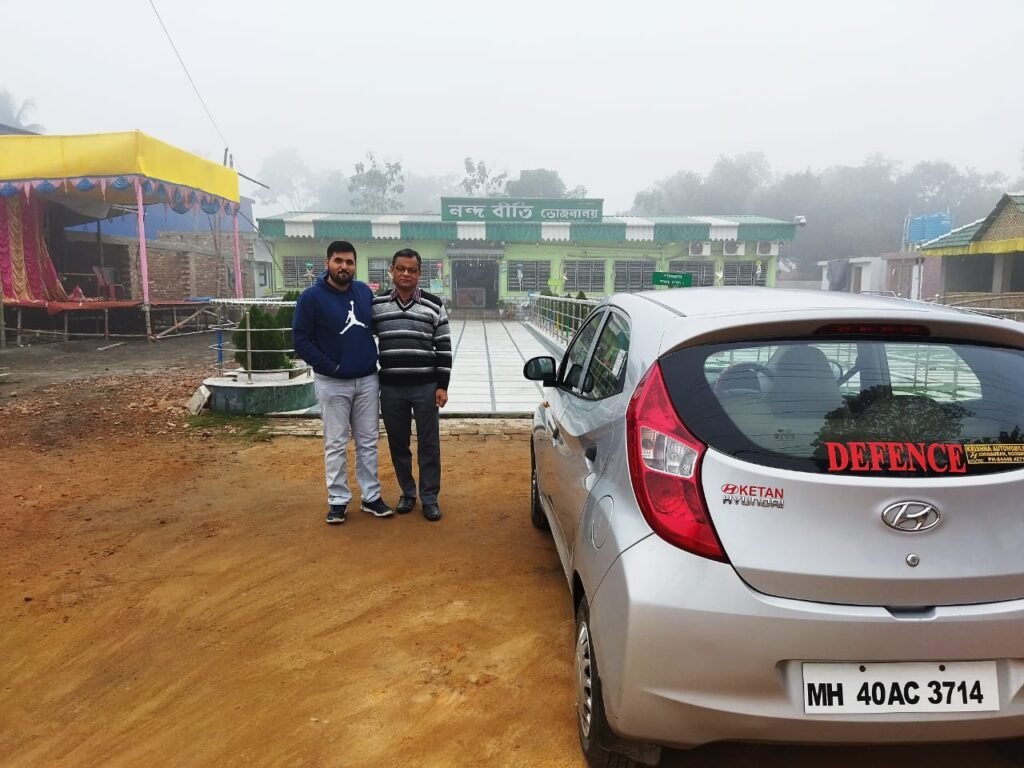
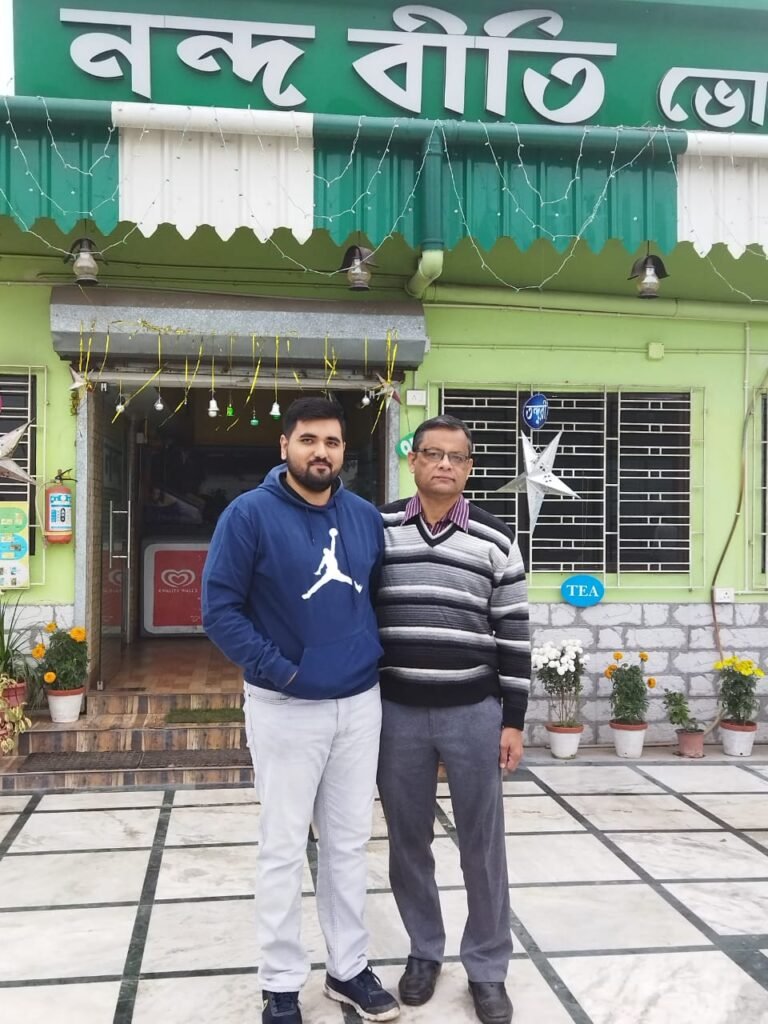
On a foggy cold morning of the fourth of this month, son Saikat and I headed for Baidyapur in our car from my hometown Chandannagar. Baidyapur is a small town in the Hooghly district of West Bengal under the Kalna division.
The fields alongside the Delhi and GT roads hid under the dense fog. Nevertheless, the headlights’ penetrating mist guided the driver to keep moving, albeit at a low speed.
But after an hour or so, the sun rose, and the fog gradually disappeared. The field alongside started gleaming under a bright sun, and our hearts warmed up.
Harvesting is over, and farmers plow up the land for winter crops. The journey now seemed to be quite pleasant. Saikat also did some outdoor shoots with his mobile camera from our moving car. Finally, our car speeded up to our destination, Baidyapur.
A brief of Baidyapur with its mythology
Little-known Baidyapur had once been dominated by Jamindars belonging to the Nandi clan. Nandi originally belonged to Kalna of East Burdwan. A petty trader, Haradhan Nandi, first came to Baidyapur to sell salt, pulses, cereal, rice, lime, etc., on the back of a cow. Nandi made a small beginning by trading these items. The wheel of fortune turned after Nandis shifted to Baidyapur. Their family network grew. Nandi dynasty merchants prospered and amassed wealth through their family business and established their empire in Baidyapur.
Baidyapur is a very ancient town. The name Baidyapur was mentioned in Manasamangal Kavya. Manasamangal is a Bengali Hindu religious text composed more or less between 200 AD to 300 AD.
Udaipur, the adjacent town of Baidyapur, is also associated with Manasamangal Kavya.
According to legend, the youngest daughter-in-law of Chand Saudagar was Behula. She was taking her dead husband Lakhindar (the youngest son of Chand Saudagar. Chand Saudagar was a wealthy merchant in 200-300 AD) into Baidyapur when her raft was intercepted at Udaipur, a village adjacent to Baidyapur.
Her raft was released after sunrise (suryoday) the following day, which is why this village’s name is Udaipur. From Udaipur, Behula took her dead husband, Baidyapur. Ayurvedic (Baidya) scholars used to live in that village. Due to that, the town was named Baidyapur. But sadly for Behula, even they could not revive Lakhinder.
Welcome to Baidyapur

A pair of beautiful terracotta Shiva mandirs greeted us as we arrived at Baidyapur at around 10 am. Terracotta is used predominantly here as part of the Hindu architectural pattern. The palatial Nandi Jamidar Bari faces the Shiva Mandirs, but the building is dilapidated, partly crumbling outside. No one stays there. The locals said the owner remains in Kolkata but keeps coming here intermittently. After parking my car in the open space adjacent to Shiv Mandir, we proceeded to Rajbari.
I met Arun Nandi. He is the Estate Manager of Rajbari Trust. I also met an octogenarian veteran, Satipati Nandi, who is well versed with the history of Baidyapur. They were waiting for us in Rajbari and warmly greeted us as we met. Arun Babu accompanied us to the spots.
Tourists Spots at Baidyapur
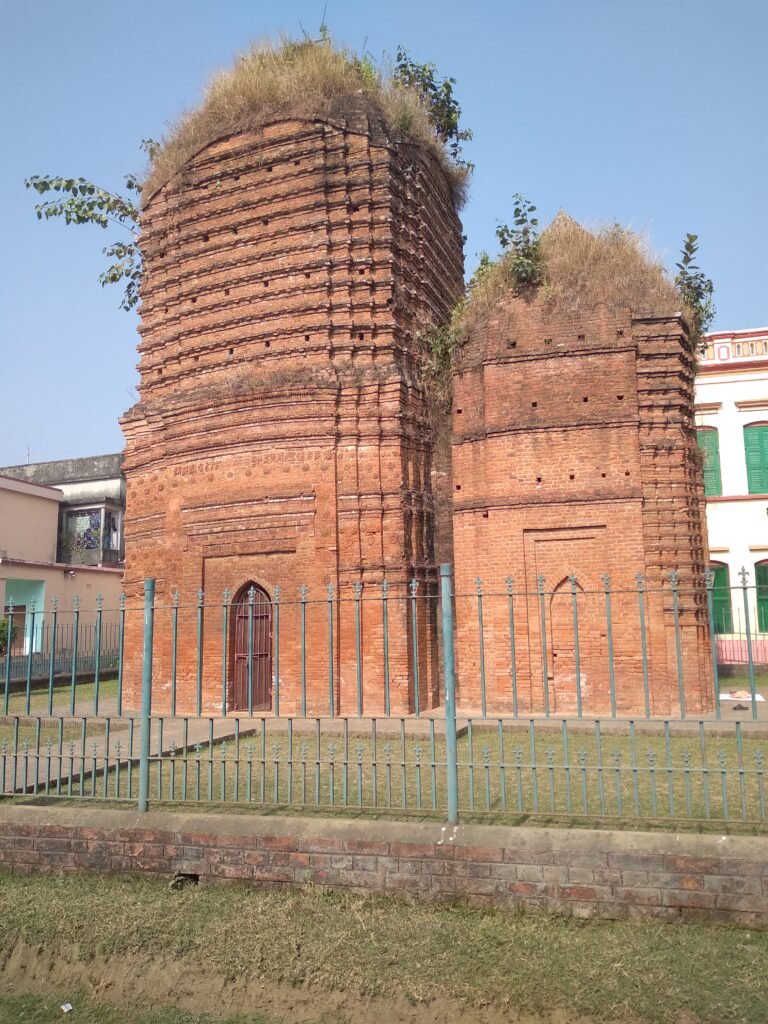
Jora Deol
Deol is a pair of two walls, and it is the most ancient monument here, built around 1000 to 1200 AD. Its surface is engraved with the terracotta of Hindu Gods, mythology, and customs of ancient times. The outer walls of the Deol rose parallel to a great height and then, in the end, took an arch shape to form the temple’s peak.
But we could not get inside, as when we went to see Deol, the archeology department was holding meetings. But a cursory glance from outside made me feel that the building was aging and was on the verge of collapse, and needed good care.
Arun Nandi told me that Deol had no idol inside. On referring to a Bengali book titled “Boidyapur oncholay itihash” by Sanat Bandopadhyay, I learned that there had been disagreements about Deol’s icon in the past. Some historians say there was an idol of Lord Krishna. However, the idol and valuables were alleged to have been looted by the Bargis(Marathas). As a result, another opinion emerged that it was a Buddhist temple.
But whatever it may be, of all the temples in Baidyapur, I felt the Deol was the cynosure of all eyes. It is the most ancient and has overcome the travails of time to some extent.
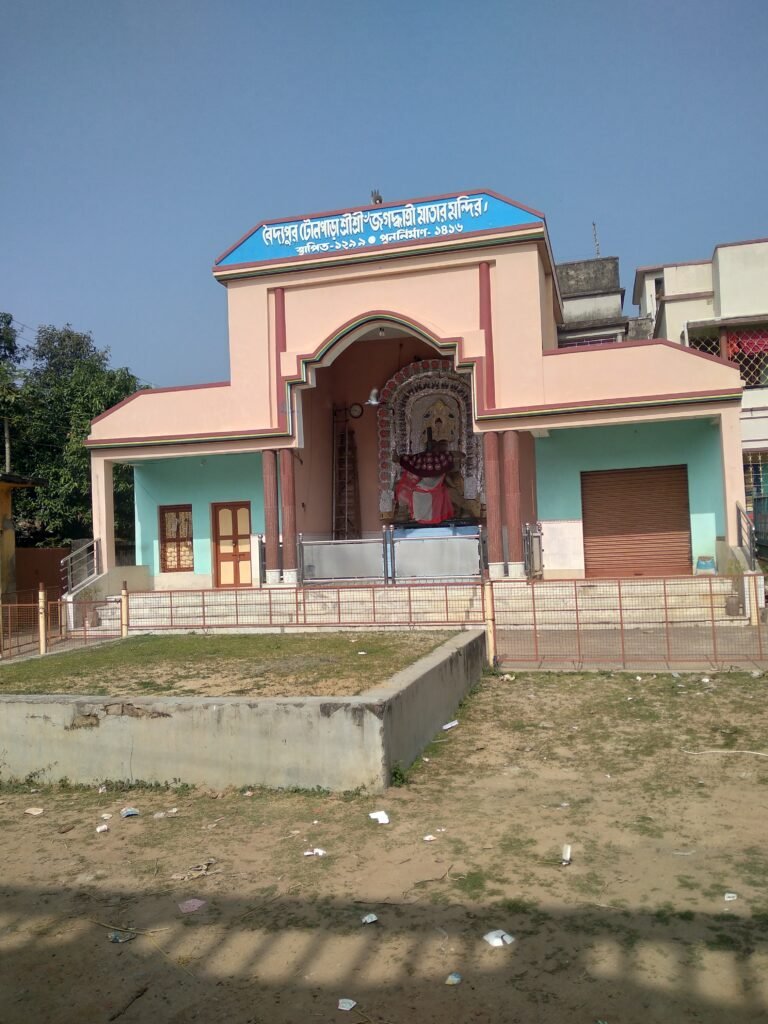
Jagaddhatri Tala
Baidyapur has two Jagadhatri Puja. Next to the Deol is famous Tolpara’s Jagadhatri Mata Mandir and the other in the adjoining Rashpara. Every year after immersion of the idol in Vijay Dashami of Jagadhatri puja, the bamboo structure frame over which the idol was placed for immersion is retained by putting on new clothes. And the framework is again being used in next year’s Jagadhatri Puja.
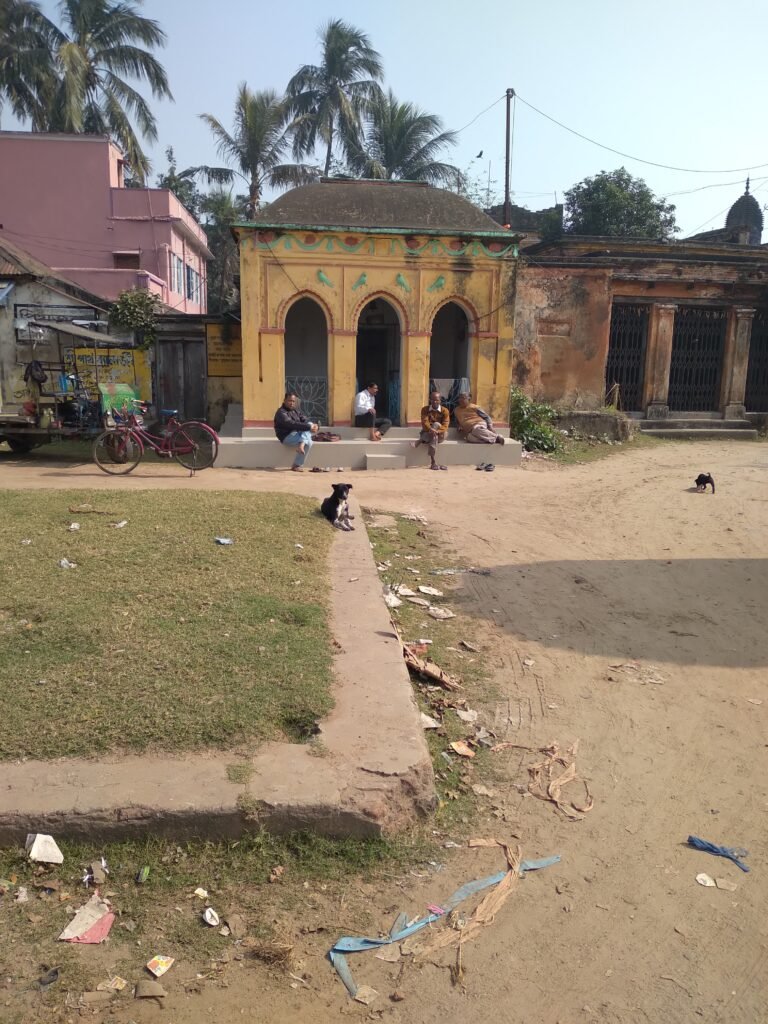
“During the Jagadhatri Puja’s Ashtami and Navami, two Jatra (Jatra: folk theatre of Bengal) are staged simultaneously on two different stages in the same place. The two stages are hardly separated by 50 meters. One was organized by Tolpara and the other by the Rashpara committee. But yet no disturbances in listening. The sound system is separately placed for listening to each Jatra. But one can view both plays on stage. This is one of our uniqueness”, said Arun Babu, smilingly.
I exclaimed, “How can it be!. And Arun Babu came up with a pat reply, “Come here to see then.”
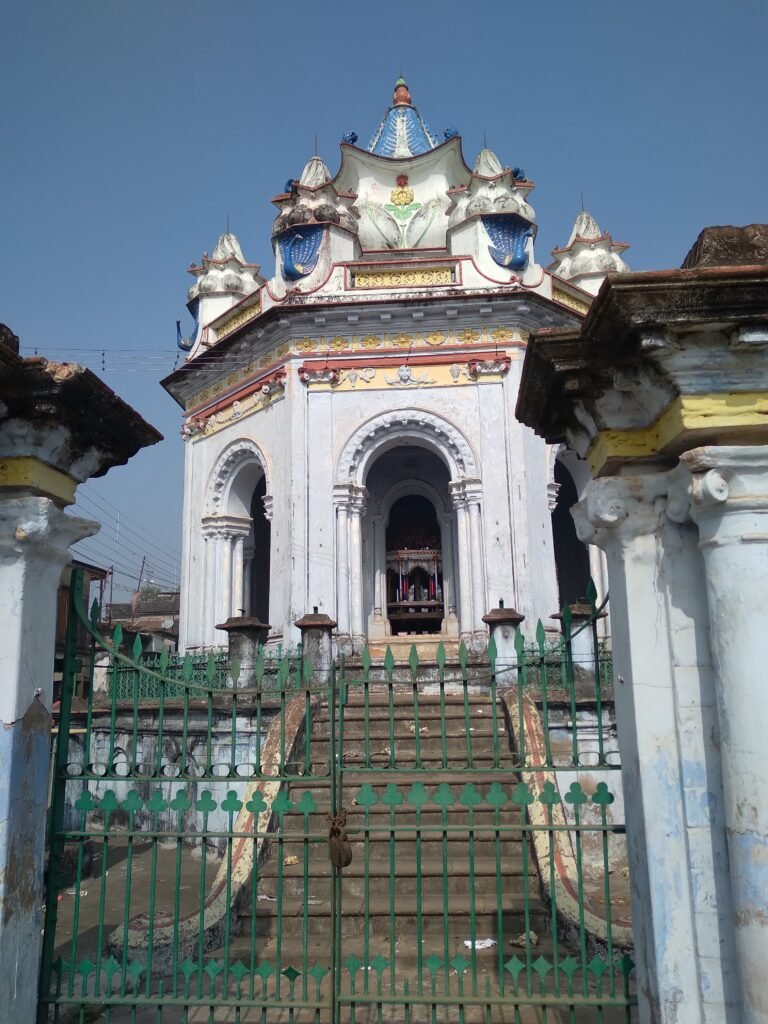
Rashmancha Mandir
From Jora Deol, you can have a glimpse of Rashmuncha. Rashmancha’s architecture looks like a temple. But no idol is worshiped here. Only during the Rash Purnima, the place is decorated for Radha Krishna Rashmila.

Brindabhan Chandra Mandir
When I visited the Brindabhan temple near Rashmancha, I found that the priest had left early in the morning after the routine rituals, closing the temple.
It would open again in the afternoon. So we could not get inside. But the architecture and artwork of the temple, which I could observe from outside, was incredible. From a distance, the temple looked like a chariot. Zamindar Madhusudhan Nandi, in the memory of his forefather Zamindar Brindaban Nandi, built this temple in 1845. Brindabhan Chandra Nandi was the grandson of Haradhan Nandi. Haradhan Nandi was the founder of the Nadi family’s business (refer to preceding para ‘A brief of Baidyapur with its mythology’)

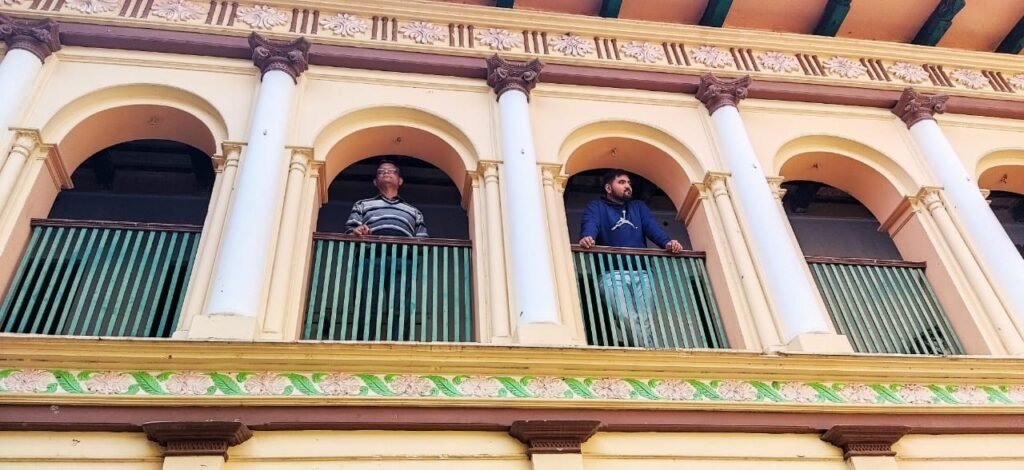
Rajbari/Pujabari/Rajrajeswar Mandir
If you walk a couple of feet from the Brindabhan temple, you will reach Rajbari. It would be wrong to think of it as the palace of a king or a Zamindar after hearing its name ‘Rajbari.’
In fact, the name of this house is Rajbari, as the name of the family deity of the Zamindar Nandi clan is Rajrajeswar (Narayan Shila). However, to the locals, it is known as Puja Bari.
Entering the Rajbari through the main door, you can see a Shiva temple on the left. After crossing the threshold and ringing the big bell, we entered the Rajbari as per the custom here.
In the Rajbari, except for Jagadhatri puja, all significant rituals and various arrangements of the Zamindar’s house are organized here.
But it became clear from the inside temple structure that women in Zamindari days were not allowed in front of the crowd. So the temples in Rajbari premises were built in a place away from the glare of the public.
But more surprise was in store for me when I saw a small secret tunnel path in the inner courtyard of this house of worship. This hidden path has descended into a pond. This underground passage is connected to the Kachari and the Baithak Khana. But the question that arose in me was:’Did womenfolk in Zamindari days uses the secret path to keep out of public glaring!
Three hundred years ago, three brothers, Thakurdas Nandi, Bhagirath Nandi, and Durlabh Nandi of the Nandi dynasty, built this Pujabari and introduced various worships.
The building stands on twenty-two pillars. The entire architecture of the building has Indo-Anglo architecture style.
The inner courtyard of Rajbari or Pujabari has a temple where the family deity Rajrajeswari (Narayan Shila) sits on a silver throne.
History of Rajrajeswar Mandir
More than two hundred years ago, Shishuram Nandi was the Zamindar of the Nandi dynasty. In 1775-76, the deity Rajrajeswar appeared in the dream of Zamindar’s wife, Draupadi, one night and asked her to establish a temple. At that time, many monks came to Baidyapur. This Rajrajeswar is nothing but a Shalgram rock (Shila), i.e., Narayana Shila. Draupadi received this shila from a monk at that time. The businesses and Zamindari of the Nandi family flourished when the Rajrajeswari was established and revered as a family deity.

Kachari Bari
If you take the road and get past the terracotta temple, you will reach Kachari Bari. The Zamindar carried out the Zamindari administration from this building.
Small bricks covered the building’s walls. Exterior walls have remained intact without plaster since time immemorial. Kachari maintained all official documents, accounts, and land records related to the revenue collection of Zamindari.
Discussions were held here with the merchants. Besides, sharecropping was done. We also took the stairs to the roof of the Kacharibari. The stares were very stiff, symbolizing the architecture displayed 300-400 years ago.

Baithak Khana
There is a massive building facing the Kachari Bari, called Baithak Khana. Baithak Khana was the meeting room of Sitaram Nandi Chowdhury, one of the zamindars of the Nandi dynasty. The vast building is still standing intact, just opposite the Kachari house.
There is a wall and an Iron Gate in front of the building. Hemanta Nandi of the Nandi dynasty also held meetings in this Baitakhana. Zamindars used to sit and hang out in this building and indulged in various entertainments. When the Zamindari system was abolished, the building was closed. So Baithak Khana is not open to the public. So you have to enjoy the architecture while standing outside.
Conclusion of Baidyapur Visit
While heading home after a day-long stay at Baidyapur, one question that does not leave me is what would have been the state of Baidyapur had the Nandi dynasty taken the reins of Baidyapur forever.













































